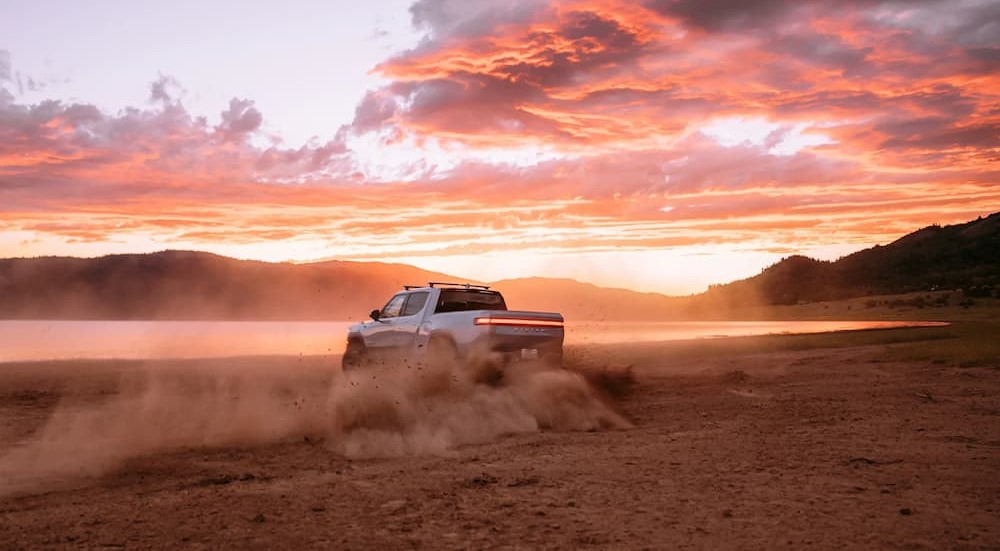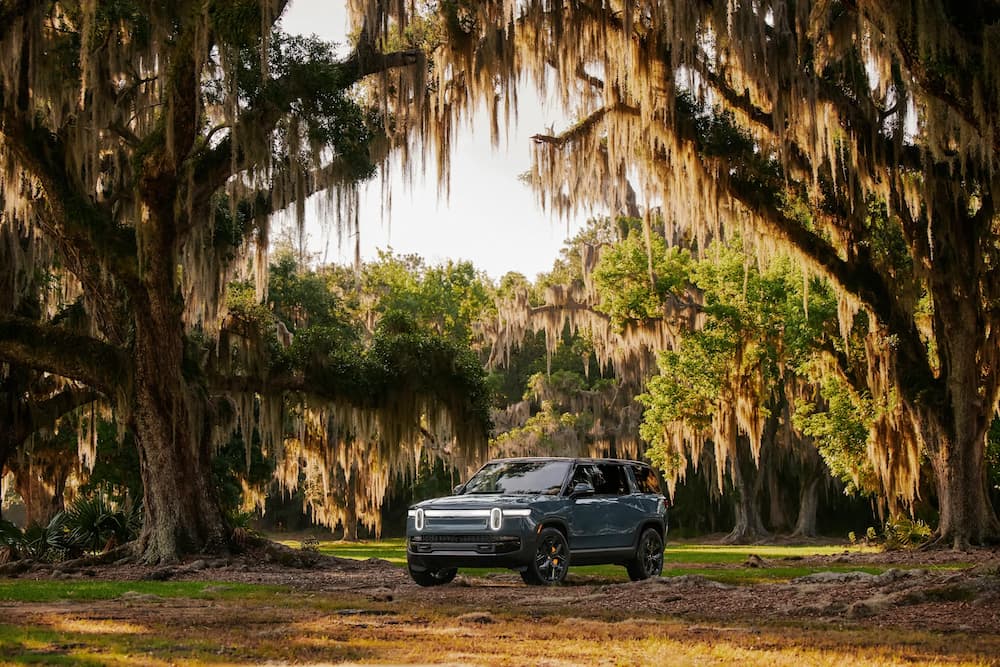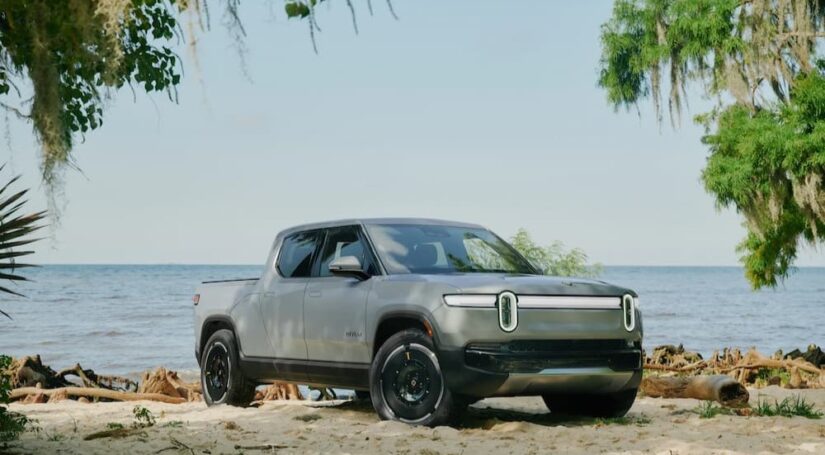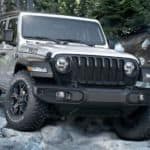With tightening emissions standards, growing consumer acceptance, and rapidly expanding charging infrastructure, there’s never been a better time to be in the EV business. California-based Rivian has gained plenty of attention since the first all-electric R1T pickups started rolling off the production line in early 2022, setting the bar in the nascent EV truck segment with a model that is just as powerful as it is luxurious. The R1S, a three-row SUV that shares the same platform as the R1T, was introduced soon after, with the R2 and R3 midsize and compact SUVs set to hit the market in the next few years. But before expanding the lineup, Rivian is working to perfect its two current offerings, gracing the R1T and R1S with a new set of powertrains and trim options as the models enter their fourth year in production. It’s a proactive approach on the part of Rivian and one that could pay dividends in establishing the brand as a leader in the luxury EV segment. Let’s see what additions Rivian has made for the new model year as we take a closer look at the 2025 R1T and R1S.
R1T
It’s never easy to be the new kid on the block, but when the block itself is pretty new, that doesn’t necessarily put you at much of a disadvantage. While Rivian’s startup status has made it a little difficult for the R1S to compete with established––and electrified––luxury SUV models like the Porsche Macan EV and BMW iX, the electric pickup segment is a different story altogether. The Rivian R1T hit the streets the same year as the Ford F-150 Lightning and beat the segment’s current best-seller, the Tesla Cybertruck, to market by a good two years. This fortunate timeline has allowed the R1T to help set the standard in the EV pickup category instead of playing catch-up, leading to strong sales and even stronger reviews. The R1T currently places third in sales behind the Cybertruck and F-150 Lightning but is a favorite among critics, with Car and Driver ranking it as the top model in the category.
“A rocket on the road and quick at the charger, the Rivian R1T’s combination of features, range, and performance has it out front in the EV pickup segment,” reads the Car and Driver review. While that’s a pretty solid endorsement, it’s the quote’s last line––“but the competition is close behind”––that has probably inspired Rivian to revisit the truck’s powertrain and trim lineup just three years into its run.
Traditionally, a three-year-old model might receive a little styling refresh and perhaps a few new features and tweaks to the trim ladder, but Rivian is taking a much more comprehensive approach with the R1T. The EV has been outfitted with an entirely new electric architecture aimed at simplifying the design while dropping some significant poundage. Rivian claims to have removed 44 lbs of wiring from the truck, shrunk the number of computer modules from 17 down to seven, and switched to a new lithium-iron-phosphate battery chemistry. The new battery doesn’t offer improved range, but it does improve the charging time.
The powertrain is where the 2025 model really sets itself apart from its predecessor. Not only has Rivian thrown a new Tri-Motor option into the mix to complement the existing Dual-Motor and Quad-Motor designs, but it has also leveraged a new proprietary drive unit that delivers dramatically increased performance, especially in terms of torque. Limited to the Tri-Motor and Quad-Motor models, the new drive unit allows the former to offer 850 hp and 1,103 lb-ft of torque while the latter delivers a mountain-moving 1,025 hp and just under 1,200 lb-ft of torque. That’s a 190 hp and 290 lb-ft improvement over the 2024 pickup and easily makes the Quad-Motor R1T one of the hardest-working pickups on the market. While it doesn’t have a noticeable effect on the truck’s towing capacity, the improved drive unit should allow the R1T to speed from zero to 60 mph in as little as 2.5 seconds.
The R1T’s base Dual-Motor powertrain comes in two configurations for 2025: a standard version with 553 hp and 610 lb-ft of torque and a Performance variant that ups the power to 665 hp and 829 lb-ft. All-wheel drive comes standard on every model, as does a revised air suspension that allows the truck to deliver a smooth, refined ride. Other updates include new adjustable beam headlamps that help to reduce glare, as well as a souped-up infotainment system with brawnier electronics and enhanced processing.
Rivian has also overhauled the R1T’s trim lineup as it moves into the 2025 model year. The base Adventure trim remains the same and is by far the most affordable version on offer, with a starting price of around $70,000. Above the Adventure is a new Ascend trim, available for the Tri-Motor and Quad-Motor versions. The new R1T still offers just as much off-road capability as its predecessors, thanks to the All-Terrain Package, which adds underbody protection and aggressive all-terrain tires on 20-inch wheels.

R1S
The R1S doesn’t stray too far from the R1T with its 2025 revisions, at least as far as the powertrain is concerned. The SUV also adds a Tri-Motor option that, along with the Quad-Motor, is powered by Rivian’s new in-house drive unit. The stats are identical for the R1S, offering the exact same horsepower and torque figures as its pickup sibling. The Quad-Motor design is a particularly compelling choice, allowing the R1S to live up to its “off-road SUV” billing by giving each wheel its own dedicated power source. This design ensures the R1S is never hurting for traction, replacing the front and rear-locking differentials found on most off-road models with a quartet of motors that accomplish much the same feat.
The R1S is offered with standard AWD, but it takes more than traction to ensure a successful off-road adventure. Body-on-frame construction is typically seen as the gold standard in the off-road world, allowing trucks and SUVs to resist the extreme twisting forces, bumps, and bruises that can come with exploring the road less traveled. The crossover approach has its own advantages, mostly in the form of efficiency and comfort, but Rivian has decided to split the difference when designing both the R1S and R1T. The two vehicles share the same underpinnings, which combine a crossover-inspired unibody shell with a so-called “skateboard” platform that mimics a traditional body-on-frame pickup. The 2025 changes––which include new suspension tuning––should really put the two vehicles over the edge when it comes to blending off-road performance with on-road comfort.
The R1S has also lost over 40 lbs of copper wire and gained new suspension bushings, a refreshed hydraulic roll-mitigation system, and a new set of air springs. This addresses some of the comfort issues that were identified with early R1S models and should go a long way toward making the SUV a more practical choice for both on and off-road applications. The R1S also gains new 20-inch and 22-inch wheel designs along with a revised user interface that should make interacting with the horizontally mounted 15.6-inch infotainment display just a little bit easier.
Aside from the powertrain, the most significant improvement might be the battery. Rivian has updated the lithium-iron-phosphate chemistry in the Standard battery pack for a boost in performance while tweaking the capacity and range of the Large and Max batteries. The Standard 92 kWh battery is said to deliver 270 miles of range, which is the same as the 2024 model despite a smaller battery. The Large battery has also been downsized for 2025, with Rivian swapping out a 121 kWh pack for a 109 kWh version, but the Max battery is better than ever, with an estimated range of 410 miles, a 10-mile improvement over last year. As is the case with the R1T, it seems like the new battery chemistry should make for a speedier charging cycle.
Like the R1T, Rivian has updated the R1S’ trim options, dropping the Adventure All-Terrain and Launch Edition models to leave drivers with two choices. The $76,000 Adventure trim remains a bargain for the EV SUV segment, providing plenty of power with its Dual-Motor configuration, but those seeking a truly plush ride should look into the Ascend, which includes a noticeable step up in luxury with premium leather upholstery and real wood grain details. We should note that these two trims are just a starting point. Rivian’s direct-to-consumer sales approach means that drivers can build their own R1S or R1T from the ground up, choosing virtually every detail, from the number of electric motors and appearance packages to battery size, off-road features, and more. This gives customers a lot more flexibility than the standard approach, where they’re limited to the trims that are available the day they visit the dealership.

Ready for the Competition
Rivian hasn’t exactly gone back to the driving board with the 2025 R1S and R1T, but the fledgling automaker has made some vital improvements that should help keep the EVs relevant in a rapidly maturing market. The new Tri-Motor option is an obvious highlight, but it’s Rivian’s new drive unit that really marks the most significant improvement for the new model year. The design gives the R1S and R1T the sort of performance that’s sure to turn some heads, even in an EV segment where models with nearly 1,000 lb-ft torque aren’t all that rare. Rivian has experienced the growing pains common to any startup, but with some strong early reviews and an increasingly EV-hungry customer base, the company has some real potential to become the next big thing. The brand’s luxury focus will likely keep Rivian’s vehicles from the top of the best-sellers chart, but for those seeking a powerful ride that makes no compromises when it comes to high-end features, materials, and ride comfort, the new 2025 R1T and R1S are certainly worth a closer look.



